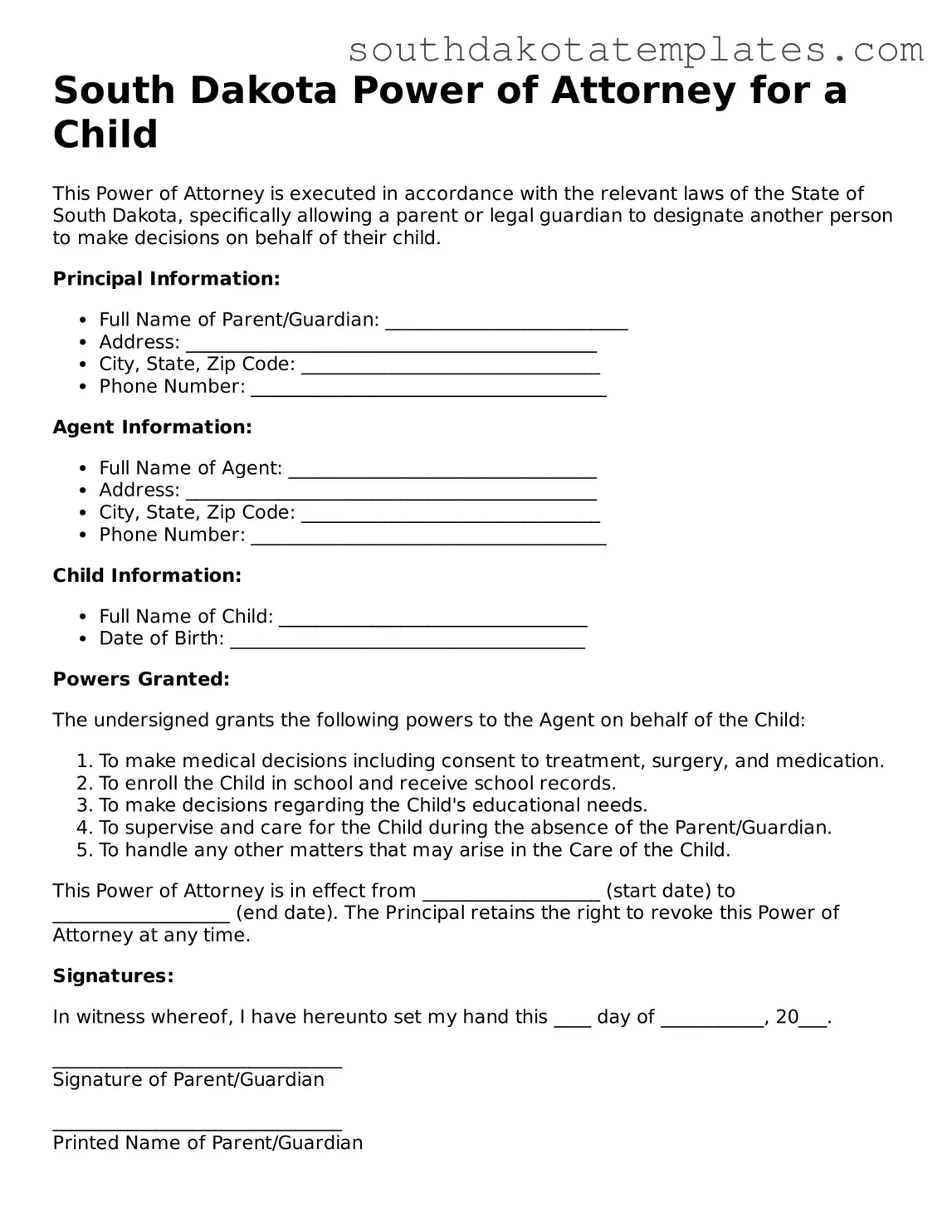Free South Dakota Power of Attorney for a Child Document
The South Dakota Power of Attorney for a Child form allows a parent or guardian to grant temporary authority to another adult to make decisions on behalf of a child. This legal document is essential in situations where a parent cannot be present to care for their child, ensuring that the child's needs are met. To get started with this important form, click the button below.
Get Power of Attorney for a Child
